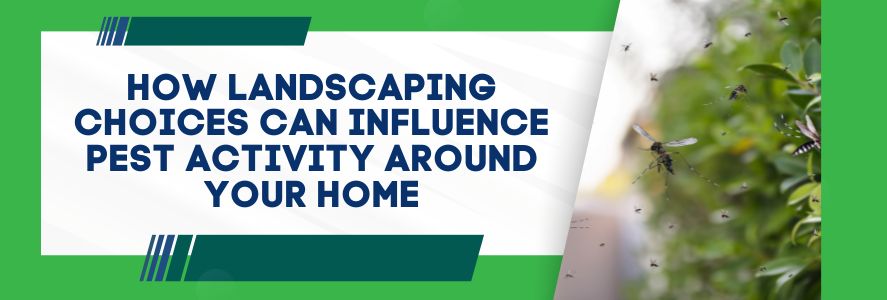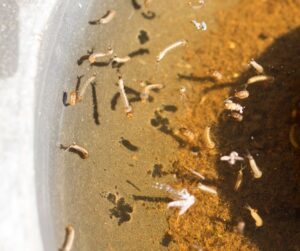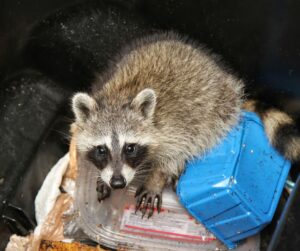How Landscaping Choices Can Influence Pest Activity Around Your Home

Are you worried about pests like mosquitoes, rats, and roaches invading your property? Do you want to make sure your property is safeguarded against destructive wildlife like raccoons, squirrels, and groundhogs? Nuisance pests and wildlife are all searching for the same things: food, water, and shelter. The best way to prevent pests and wildlife from invading your home or destroying your property is to eliminate things that might make them consider your home as a possible nesting site.
If you already have pests and wildlife inside your home or on your property, don’t panic! Summit Environmental Solutions can help. Our team offers the best wildlife removal and pest control treatments in the Alexandria, Arlington, Fairfax, and Fredericksburg areas. Contact our team today to get started with a free estimate at 703-520-5868!
What Attracts Pests and Wildlife to my Home?
Integrated pest management is the process of looking at the various factors that lead to a pest or wildlife invasion, and taking measures to remedy the situation, so once the wildlife or pest is removed, no more will come to take its place. Figuring out WHY a raccoon or a mosquito wants to spend time on your property is key, and a huge part of that is looking for what attracts them. Some of the main factors that will attract pests and wildlife to your home include:
Standing Water

Tall Grass and Lawn Debris
Tall, unkempt grass, overgrown plants, firewood, and any other lawn debris create the perfect cover for pests like mice, rats, roaches, spiders, and more. Even bigger wildlife like groundhogs, skunks, and snakes prefer to have plenty of cover and hiding spots, as a trim lawn with no place to hide offers no protection against predators.
Unsecured Trash Cans and Bowls of Pet Food

Tree Branches
If you have a tree close to your home, and your tree branches are within 10 feet of your roof, then these branches can provide easy access for squirrels, raccoons, opossums, and roof rats that will easily climb the tree and walk or jump from the branch to your roof. Afterward, these critters will gnaw and claw at any entry points they find around your soffit, fascia, rake board, gable vents, chimney, or flashing to get inside your attic.
Gardens
Dry Rot and Untreated Wood
Wood-destroying insects like termites, carpenter ants, and carpenter bees prefer to feed and nest inside moist, unpainted, and untreated wood. Additionally, wood that has been water-damaged or is suffering from dry rot creates ideal conditions for wood-destroying insects. Woodpeckers feed on carpenter bees, so they will create even bigger holes inside your wooden structures as they drill and peck rapidly to search for insects to eat.
Habitat Modification to Keep Pests Away
Practicing some basic habitat modification can greatly reduce the number of pests and wildlife lurking on your property. Make sure you locate and dump out all sources of standing water on your property, or at least put mosquito dunks inside. Keep your grass cut short, prune any weeds or excess plants and remove all other lawn debris like firewood. A tidy, short lawn is far too open for most wildlife, and it can also deter pests like rodents and spiders. Make sure your trash cans are tightly secured, and bring in all bowls of pet food at night. Making these small changes can make a big difference!
Pest Control and Wildlife Removal in Alexandria, Arlington, Fairfax and Fredericksburg
If you have roaches, mice, or ants in your kitchen, mosquitoes in your yard, or squirrels and raccoons in your attic, contact the experts at Summit Environmental Solutions today. Our team can treat your property for pests like mosquitoes, roaches, mice, rats, and termites. We can also safely and humanely trap and remove any wildlife that has made its way inside your attic, chimney, vents, walls, garage, or crawl space. Summit Environmental Solutions can also provide you with wildlife exclusions, seal-outs, and wildlife fencing to keep animals out of your home, yard, or garden. Our team offers FREE estimates, so contact us today to get started at 703-520-5868!




